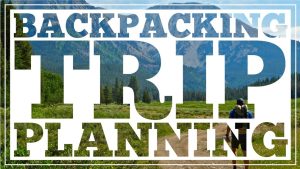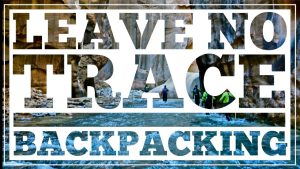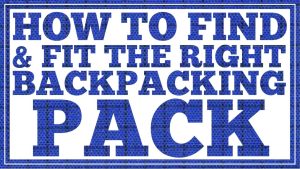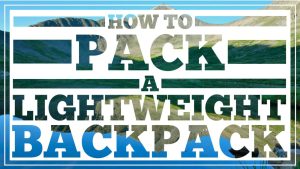Ep. 16 – Crossing Snow – Ice Axe Self-Arrest
We independently test everything we recommend.
Buying through links on our site supports our work.
Hiking on Spring Snow – Ice Axe Self-Arrest
I’m Dave Collins with cleverhiker.com and in this episode we’re going to take a look at hiking on snow during spring and summer backpacking trips.
Even if you’re not planning a winter backcountry trip, you may still have to deal with crossing snowfields on the trail.
It’s very common for spring and summer hikers to encounter snowfields before they have a chance to melt, especially in higher elevations.
Knowing how to cross them safely will be the difference between having a successful adventure and either risking a terrible fall or turning around to head back home early.
—
When you first come across snow on the trail, it’s important to examine it to see what type of snow you’re going to be walking across.
What you’re trying to do is determine how the snow will behave when you walk on it. Is it thick and icy on top, soft all the way through, densely packed down, or crusty and hollow in places?
If the snow is on a steep slope, it’s also important to consider the avalanche danger.
In spring and summer the potential for avalanches is much lower if there hasn’t been fresh snow, but it’s still important to inspect the snow to assess the possibility of slides.
Snow conditions will soften throughout the day as temperatures rise, so try to picture how the snow will act later in the day as well.
If there is a thin layer of crust on top of the snow you might experience postholing, where sometimes the snow will support your full weight, and sometimes you’ll sink in up to your knee or hip.
Postholing can be jarring, exhausting, and also dangerous, so make sure to assess your chances of having to deal with it before you venture too far.
When you’re hiking on snow, conditions are bound to be colder, so make sure you have a good winter hat, a pair of gloves, and an extra layer for warmth.
For short stretches of soft snow, you won’t need any specialized footwear. Your normal lightweight hiking shoes will handle the snow just fine and will dry quickly if they get wet.
A pair of gators can also help to keep your feet dry and warm by keeping loose snow out of your shoes.
In the early morning, snow might be hard and icy after a cold night. In those circumstances, traction control devices for your feet can be very helpful.
Crampons are designed to be worn with mountaineering boots and they’ll provide the best traction for steep and icy conditions.
But if your spring hike is unlikely to be that intense, there are traction control devices that will work with your normal hiking shoes to give your feet more grip without needing heavy boots and crampons.
Also, when temperatures rise and the sun comes out, the snow will soften and you will usually be able to kick steps in the soft snow to safely traverse slopes.
When kicking steps in snow, kick hard, firm steps into the slope with the side of your shoes to create a large surface area of sturdy contact.
Trekking poles will help you to maintain balance on snow but they aren’t designed to be used for self-arresting.
Use them for stability on flatter ground but carry an ice axe when you might face a dangerous slide.
When traversing a steep snow slope, it’s critical to consider what would happen if you slipped.
The snow might be soft and level enough for you to stop yourself by digging your knees, feet, and elbows in.
But if it’s not, you will pick up speed very quickly until the either slope evens out or something below, like a cliff, jagged rocks, or a tree, breaks your fall.
If you ever have any uncertainty about being able to stop yourself from sliding, you should carry an ice axe and be confident in your ability to self-arrest.
—
An ice axe has many uses, but it is primarily a safety tool for helping you stop an unexpected fall down a slope, which is called making a self-arrest.
Learning how to properly self-arrest is a life-saving skill that will take lots of practice to master, but learning the basics is easy.
Because being able to self-arrest is such a critical skill, I highly recommend taking a snow skills class so you can practice it repeatedly in a safe learning environment with experts to help give you feedback.
When carrying an ice axe on a snow slope, always hold the axe in your uphill hand with your thumb under the adze and the pick of the axe pointing backwards.
It’s also very important to have a good grip on your ice axe at all times. Your ice axe is your lifeline and dropping it could be disastrous, so hold on tight.
If you do slip down the slope, it will be important to assume the proper self-arrest position and stop your slide as quickly as possible.
In the self-arrest position, you’ll bring the ice axe to your chest diagonally across your body with one hand on top of the axe with the pick facing out at shoulder level and your other hand down the shaft on the other side.
Keep your arms tucked into your sides and a very firm grip on the axe.
Once you’re in the proper arrest position with your axe contacting the snow and your feet facing down slope, put as much pressure on the pick of the axe as possible to stop your slide.
Arch your back, keep your knees wide, lift your feet up, and keep your stomach off the snow. In this position you’ll be able to put the bulk of your weight on the pick.
It’s very important to keep your feet up until you slow your slide. If you try to dig your feet in, you might send yourself into a cartwheel down the slope.
This is especially important if you’re wearing crampons or traction devices on your feet, which could catch and cause you a serious leg injury.
—
Falling down the slope on your stomach with your feet facing downhill will make it easy to self-arrest, but in an actual slip, you body could be in any number of different positions.
That’s why it’s important to practice getting to the proper self-arrest technique from a variety of different falling positions, including being on your back and upside down.
The most common four positions you could find yourself in are with your head uphill or downhill, and either on your back or your stomach.
In any slide position, the main goal is to reorient yourself to the basic self-arrest position as quickly as possible.
If you find your self on your back with your head uphill, roll towards the head of the ice axe, plant the pick into the snow, and assume the self-arrest position.
The important thing with this position is to remember to roll towards the head of your ice axe, whichever side it’s on, so you don’t risk your axe being pulled from your hands.
If you are on your chest with your head downhill, reach the pick of the axe out to the side and apply pressure to swing your legs around, then pull the axe close to your chest and self-arrest.
If your head is downhill and you’re on your back, jab the pick into the snow at waist level on the side of your body where the head of the axe is and use it as a pivot point to swing your body around and twist over to your front side.
Bringing your legs and feet together and using a sitting up motion will help you to swing your body around. Once you’re on your front pull your ice axe close to your chest and self-arrest.
These techniques will take time to master and it’s very important to practice them in a safe environment.
Practice with a partner in an area where the runout is safe, so you’ll be ok even if you fail on a self-arrest attempt.
Always wear a helmet when practicing, and don’t attach your ice axe to your body or wear crampons or traction devices.
Wearing a backpack will make self-arresting more challenging, so first master it without a pack on before practicing with a pack.
It’s also important to know that the self-arrest technique is an absolutely critical skill that could safe your life, but it’s not fail proof.
It can be nearly impossible to stop yourself if the slope is too steep and slippery or if you get going too fast before you can self-arrest.
That’ why using sound judgment, balanced footwork, and having confident skills on snow will help you to avoid falling in the first place, which is a much better goal.
—
Before you head out on an early season trip, make sure to check on snow conditions so you know what to expect and can bring the right equipment.
Remember that snow slopes will be easier to cross after they’ve have warmed up and don’t hesitate to turn around if the consequences of a fall are too dangerous.
It’s always better to be practiced, confident, and safe than to take unnecessary risks that could put you or your group in danger.
I’m Dave Collins with CleverHiker.com, hike light hike smart and have fun.
MORE EPISODES IN THIS SERIES
View all





